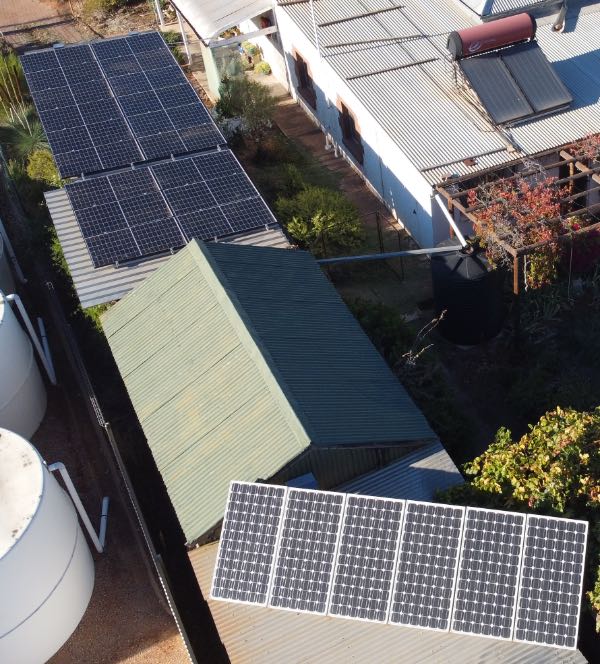|
A solar power system on your roof
In 2021 in Australia a 5kW solar power system will cost you about Aus$6,000. If the power that you buy from the grid is largely generated by burning coal and gas each kilowatt-hour you take from the grid will involve the release of around a half a kilogram of carbon dioxide into the atmosphere. Your 5kW solar system will generate about eight megawatt-hours of electricity in a year. That power will displace power from the grid and will reduce the amount of CO2 going into the atmosphere by about 3.9 tonnes each year.So in terms of capital cost, if you reduce your emissions by buying solar power, $6,000 invested saves 3.9 tonnes per year, or each thousand dollars invested saves 660kg per year.
Qualification
The calculations and approximations on this page apply in an area (such as mainland Australia) where most of the electricity is generated by burning fossil fuels. They would not apply in a place like Tasmania where most of the power is generated by emissions-free hydro.Myself
Over that last 15 years I have had two solar systems installed on each of the two properties my wife and I own as well as having solar systems installed on each of our children's homes.
As of the time of writing this page, May 2021, the total of our solar power installations comes to about 22kW. Figuring on a capacity factor of 18% and our solar power displacing gas-fired generation at 0.5 tonnes of carbon dioxide per MWh the solar that we have installed would reduce emissions by about 35 tonnes per year.
|
Or replace your conventional car with an electric?
Burning each litre of petrol (gas for Americans) releases about 2.3kg of carbon dioxide into the atmosphere. So if you drive a vehicle that uses a typical 8 litres per hundred kilometres and drive a typical 15,000km per year your vehicle will be releasing about 2.8 tonnes of CO2 each year. You could avoid this by replacing your internal combustion engine (ICE) powered car with an electric one and charge it from your own solar panels or buy green electricity to charge it. In 2021 buying an EV in Australia will cost you from Aus$40,000 upward.So in terms of capital cost, if you reduce your emissions by buying an EV, $40,000 saves 2.8 tonnes per year, or each thousand dollars invested saves 70kg per year.
This is actually optimistic because it does not take into account that by using your solar power to charge your car battery it means that it will not go into the power grid and displace fossil-fuel generated electricity.
Myself
I have periodically considered buying an EV over about the last ten years. Most recently I seriously looked into getting either a Hyundai Ioniq (about Aus$53k) or an MG ZS EV (about Aus$44k). My life style requires me to use a trailer periodically. So far as I was able to find out from the local dealers in May 2021 neither of these cars can tow a trailer.
Then I looked into the greenhouse gas savings involved and decided to place my thoughts on this page.
My motivation for writing this page
My reason for writing this page is certainly not to disparage electric vehicles. We must change from the burning of the fossil fuels that are widely recognised as the main cause of climate change, ocean acidification, sea level rise and ocean warming. The air pollution from the burning of fossil fuels also kills millions of people world wide each year.My motivation is to show that a person of limited financial means can reduce greenhouse emissions more effectively by installing solar power than by changing to an electric car.
The time of electric vehicles will come, but if you have the choice you can reduce emissions more economically by installing solar power than by buying an electric vehicle.
Calculations, in case you are interested
Solar
My example solar power system is 5kW. I've worked on a capacity factor or 18%. So the 5kW system will generate 5 × 0.18 × 24 × 365 = 7,884kWh = 7.884MWh per year.I have assumed that generation of every megawatt-hour of the electricity on your local grid will result in 500kg of CO2 going into the atmosphere. This depends on how your electricity is generated: for gas-fired generators this will be about right, for mostly hydro it will be too high, for mostly coal-fired generation it will be too low.
7.884 × 0.5 = 3.942 (tonnes of CO2)

